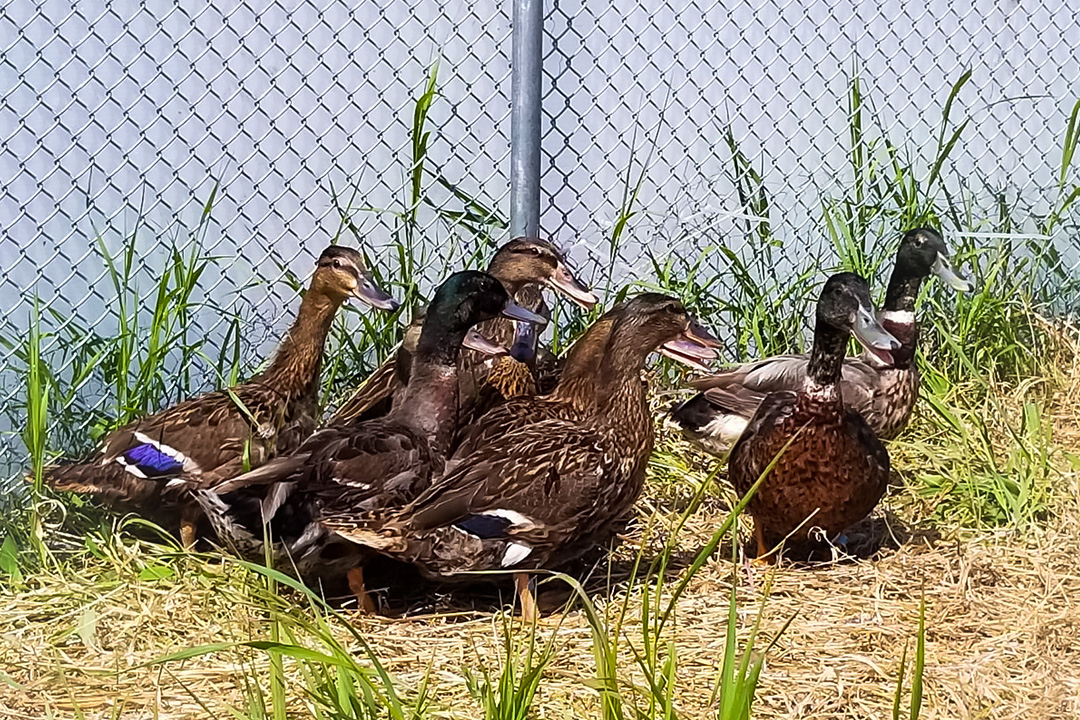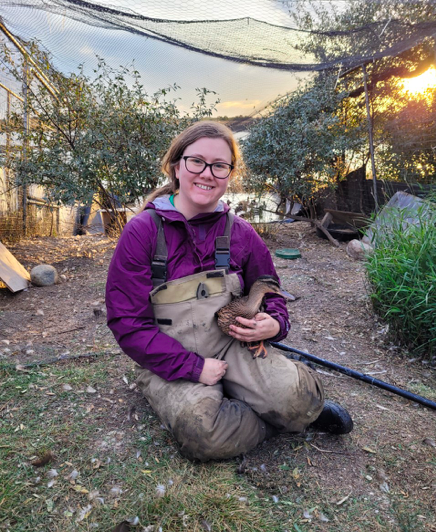
It’s a gut feeling: measuring stress in waterfowl
Just like people, waterfowl can experience feelings of stress that affect their gut microbiome — the trillions of microorganisms living inside their digestive system.
By Jessica Colby
“If you’re stressed, your gut microbiota will change,” says University of Saskatchewan (USask) graduate student Breanne Murray. “And that can be important because bacteria help digestion and nutrient absorption.”
Murray has been working with and studying ducks for the past six years — initially as a master’s student and now as a PhD candidate. She is part of a Western College of Veterinary Medicine (WCVM) research team studying how stress affects the gut microbiome in mallard ducks, Canada's most common duck species. Mallards are a very adaptable waterfowl species known to thrive in captivity.
Led by Dr. Karen Machin (DVM, PhD), the team has developed a method to measure the different metabolites in the ducks’ feces. Metabolomics describes the study of metabolites — small molecules produced by metabolism, such as when the body breaks down food, drugs, and chemicals, or in response to stress and disease.
Using feces is a very non-invasive method of study, making it possible to collect and analyze without handling the animal. This makes it potentially applicable to a study of wild birds, says Machin, an associate professor in the WCVM’s Department of Veterinary Biomedical Sciences.
About 70 percent of North America’s waterfowl nests in the “Prairie Pothole” region. This includes Alberta, Saskatchewan and Manitoba as well as North Dakota, South Dakota, Iowa, Minnesota and Montana in the United States.
Most ducklings are hatched in potholes, often called “sloughs,” in this region. However, with climate change, there may be increased periods of drought. This may reduce the habitat where most ducks come to breed, nest, and raise young.
Machin points out that industries such as agriculture, forestry and oil and gas also have long-term effects on habitat, impacting waterfowl populations.
Corticosterone is a hormone that increases in ducks in response to stressors and is similar to cortisol in humans. Corticosterone is a hormone that regulates energy balance. Glucose and energy are produced through gluconeogenesis to overcome the stressor, allowing the animal to be able to escape and have an increased chance of survival.
In the WCVM study, the researchers inserted a 10-day slow-release corticosterone implant under the skin of captive mallard ducks. The ducks were monitored, and feces were collected to measure the microbiome, metabolites and the amount of corticosterone present.
“We are measuring metabolites in the feces and looking at how the microbiome changes in response to high levels of corticosterone that is not associated with normal energy regulation,” says Machin.
“We can use fecal metabolite profiles to differentiate between ducks that were stressed and producing energy to overcome the stressor versus those with normal energy maintenance and growth,” says Murray.
Murray says they ran untargeted metabolomics and looked at metabolites present in the ducks’ feces to measure stress.
“We found that metabolites did not differ in the first two days of the implant when corticosterone concentrations were high,” says Murray. “We started to see the metabolite difference when corticosterone decreased due to negative feedback.”
The research team saw metabolite differences in the birds after two days which is likely related to the time it takes for digestion and metabolism to appear in the feces. Interestingly some of the most significant changes occurred when the body was trying to limit the effects of corticosterone.
If we are seeing changes in this highly adaptable species, you can extrapolate what might happen with more sensitive species like [the] northern pintail,” says Murray. The northern pintail is a medium-sized dabbling duck that breeds from Alaska and the Canadian Arctic south to the Prairie Pothole region in Canada and the U.S. Unlike the mallard, the northern pintail usually only makes one nesting attempt, so disturbances in the environment may affect them more.
“Being able to monitor an animal's physiology may give information on how they can adapt to their environment,” says Murray.
Through this study, Machin says the WCVM researchers hope to understand better the ducks’ physiological responses to stressful situations or adverse conditions. By doing so, they can apply their findings to real-life situations.
“It’s about getting more information to help us better understand the physiological changes during situations that are truly stressful,” says Machin. “If we can understand this better, maybe we can understand the impact of environmental stressors on the animal and better interpret how they cope in a potentially adverse environment.”
The WCVM’s Wildlife Health Research Fund provided funding for this study.
